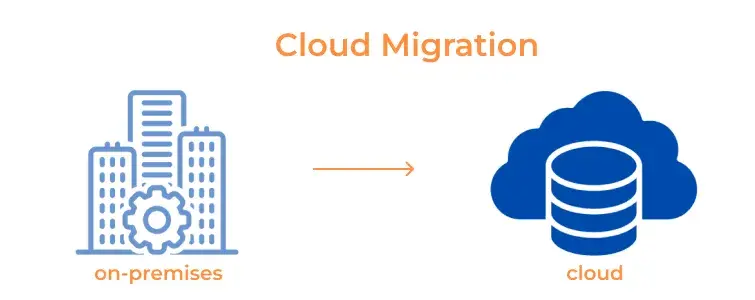Introduction
Migrating from on-premises Dynamics CRM to the cloud-based Dynamics 365 is crucial for many businesses aiming to modernize their systems. However, your migration path depends on various factors such as business goals, existing infrastructure, and long-term needs.
In this article, we will explore the main migration strategies available and figure out how to choose the right one for your business.

Migration Strategies
Lift and Shift (Rehosting)
The "Lift and Shift" approach is one of the simplest and most cost-effective strategies for cloud migration. This strategy moves the existing on-premises CRM system to the cloud with minimal changes. It involves transferring all the current setup, configurations, and data to the Dynamics 365 cloud environment with little to no optimization.
Key Benefits
- Speed
This method is quicker than other strategies since there is minimal restructuring.
- Cost Efficiency
It avoids the need for a full-scale system redesign, making it more affordable.
- Reduced Risk
Keeping the system unchanged reduces the risks associated with more complex migrations.
When to Choose
It is especially appropriate when your business needs a quick transition to the cloud with minimal disruption or when your current on-premises system is relatively modern and functioning well.
However, while this method is straightforward, it does not fully leverage the advanced features and optimizations available in Dynamics 365, which may limit long-term performance improvements.
Optimize and Shift
The "Optimize and Shift" strategy involves migrating to Dynamics 365 with selective optimizations. This approach starts with an evaluation of the existing system to identify areas that can be enhanced, such as improving data structures, refining workflows, or introducing automation through Power Automate or AI tools.
Key Benefits
- Increased Efficiency
By optimizing before migrating, you can improve your system performance and enhance business processes.
- Futureproofing
You will take advantage of the more advanced features in Dynamics 365, allowing your system to scale as your business grows.
- Customization
You can tailor the CRM to your business’s current needs without completely rebuilding it.
Besides, this approach balances simplicity and the opportunity to unlock more of the cloud platform's benefits.
When to Choose
It is reasonable to opt for this method when your system has functional components that can be retained but also areas where performance could be improved or when you want to take advantage of some of the cloud-native features like automation and AI without overhauling the entire system.
Rebuild (Remake from Scratch)
The existing system is decommissioned in a full rebuild approach, and a brand-new Dynamics 365 solution is designed and implemented from scratch. This strategy is the most comprehensive, involving a complete redesign of business processes, data architecture, and system features to make full use of the cloud platform's capabilities.
Key Benefits
- Complete Customization
This method offers the most flexibility in tailoring the system to your exact needs and future goals.
- Modernization
By starting from scratch, you avoid carrying over legacy issues, technical debt, or outdated practices.
- Long-Term Value
A fully rebuilt system ensures that your organization can fully leverage the latest cloud innovations, such as advanced analytics, AI-powered insights, and seamless integration with other Microsoft services.
In addition, though more costly and time-consuming, this approach provides maximum flexibility and long-term value.
When to Choose
It is especially suited if your existing system is outdated or no longer meets your business requirements, or if you require a future-ready solution that can evolve with your organization. Or if you want to redesign workflows, processes, and integrations completely.
Hybrid Migration
A hybrid migration strategy means retaining some parts of the existing on-premises system while migrating others to the cloud. This is particularly useful for businesses with complex systems that rely on specific on-premises components or have data that cannot easily be moved due to regulatory constraints.
Key Benefits
- Flexibility
It allows you to retain certain on-premises functionalities while gradually shifting other aspects to the cloud.
- Risk Mitigation
Moving in phases will minimize disruptions and reduce the risk of failure during the migration.
- Compliance
It is ideal for businesses with sensitive data that must remain on-premises to comply with regulations.
When to Choose
You should choose this approach if your business needs a staged migration to avoid disruptions, or if you have to maintain specific legacy systems for regulatory or technical reasons but still want to benefit from cloud features.
Phased Migration
A phased migration is based on moving to Dynamics 365 in stages rather than all at once. This strategy minimizes disruption by focusing on migrating one business unit, department, or functionality at a time. Each phase is mindfully planned and performed, ensuring that critical business processes remain unaffected during the transition.
Key Benefits
- Minimal Disruption
The critical systems remain operational during each phase, reducing the impact on daily business.
- Manageable Risk
Each phase can be tested and optimized before moving to the next, reducing the risk of failure.
- Adaptability
This approach implies continuous learning and adjustment throughout the process.
When to Choose
It is perfect for selecting when your business relies on critical systems that an immediate migration cannot disrupt or when you prefer a gradual approach to ensure all systems are thoroughly tested and optimized.
Conclusion
Opting for the proper migration strategy depends largely on your business goals, technical requirements, and budget. Whether you are looking for a quick lift and shift, a more optimized transition, or a complete system overhaul, Dynamics 365 offers flexible options to meet your demands.
Thus, understanding these different approaches can help your business make an informed decision, guaranteeing your migration is successful, cost-effective, and aligned with your long-term objectives.
Read more on the topic on the UDS Blog.

